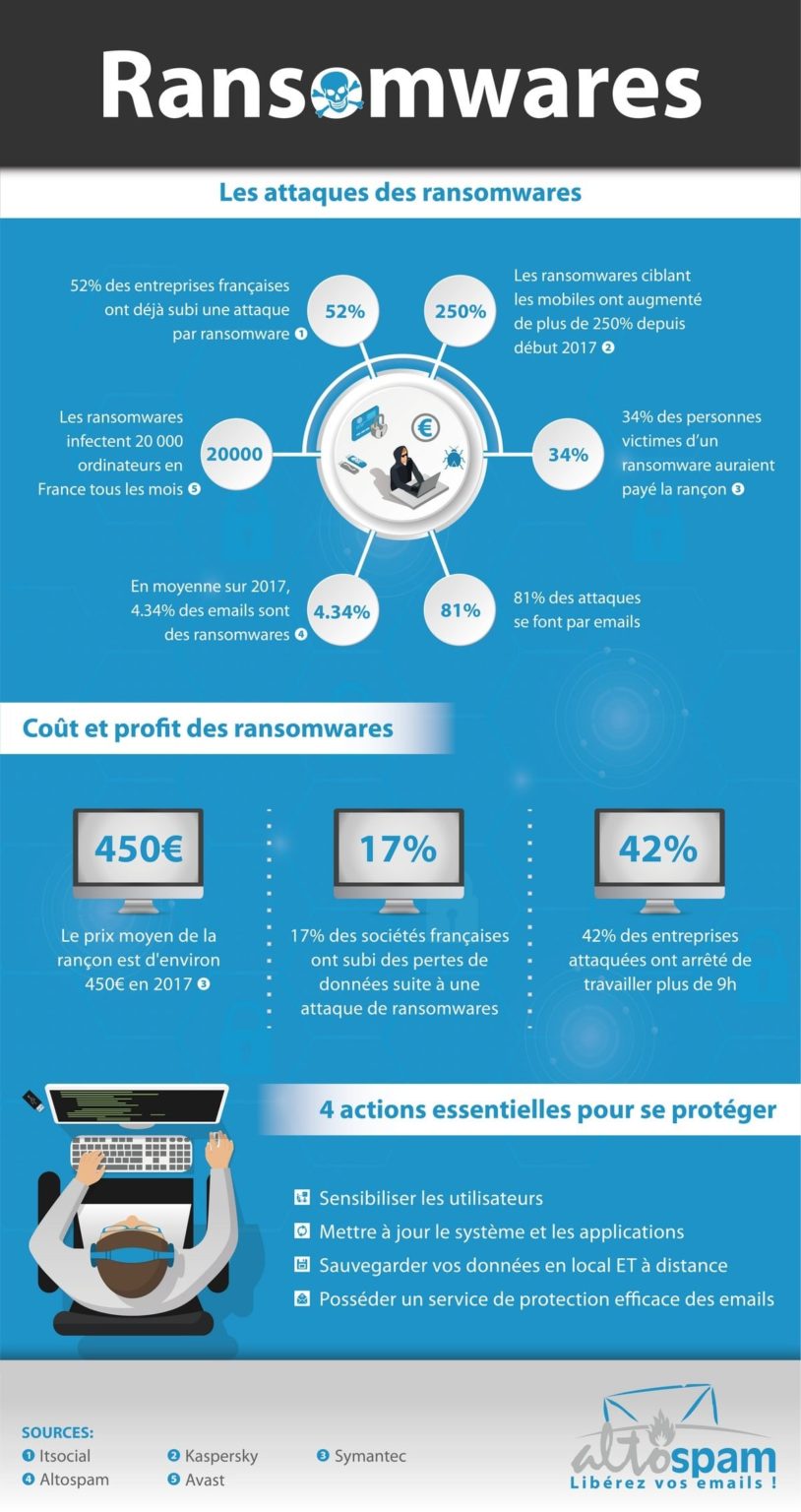Test Altospam’s solutions!
Thousands of companies, CTOs, CIOs, CISOs and IT managers already trust us to protect their e-mail against phishing, spear phishing, ransomware, …

The infographic below summarizes the key figures on ransomware, attacks, costs and profits for hackers. Get a quick overview of ransomware figures and statistics for France. And find the 4 essential actions to prevent them.
– 52% of French companies have already suffered a ransomware attack (1)
– Mobile-targeted ransomware has increased by more than 250% since early 2017 (2)
– 34% of ransomware victims would have paid the ransom (3) (64% for Americans, who have become a prime target)
– 67% of French SMEs refuse to pay (4)
– 81% of attacks are carried out by e-mail
– On average over 2017, 4.34% of emails are ransomware (5)
– WannaCry hit 150 countries and more than 300,000 computers in May 2017
– 3 hours: duration of a massive ransomware blitz
– During attacks, the number of e-mails containing ransomware can reach 57% of traffic (5)
– Ransomware infects 20,000 computers in France every month (6)
– The average price of the ransom was around €450 in 2017 (3) (compared with €1000 in 2016).
– 17% of French companies have suffered data loss following a ransomware attack
– 42% of companies attacked stopped working for more than 9 hours
– Ransomware profits expected to reach $1 billion in 2017 (4)
– A British organization paid $100,000 in the wake of WannaCry
– Ransomware can be purchased for between $50 and $175 (exploitable directly online in RaaS: Ransomware as a Service).
– raise user awareness
– update system and applications
– back up your data locally AND remotely
– have an effective email protection service
59% of French CISOs believe that raising awareness and training staff is the most important way to combat the problem (4)
Sources: 1: Itsocial – 2: Kaspersky – 3: Symantec – 4: Malwarebytes – 5: Altospam – 6: Avast
Test Altospam’s solutions!
Thousands of companies, CTOs, CIOs, CISOs and IT managers already trust us to protect their e-mail against phishing, spear phishing, ransomware, …